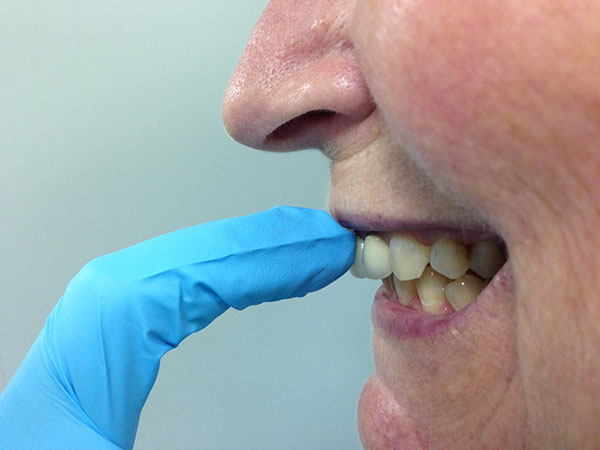Some users may experience temporary issues accessing parts of the site. Thanks for your patience.
- Office Hours Mon - Fri 9:00 am – 4:00 pm EST
By Dr. Shannon Johnson
Good Vibrations?
| As clinicians, the very purpose of our dental exam is to thoroughly evaluate each patient for any sign of instability that will lead to breakdown of the masticatory system. Not including macro-trauma, there are only two simple reasons for the system to break down:
1. Microorganisms (bacteria, viral, fungal) 2. Stress from microtrauma |
 |
Dental school trained us exceptionally well in treating the microorganism component caries and periodontal disease. Stress from microtrauma results in what we see clinically as occlusal disease or occlusal instability, an entity that can be more challenging to manage. Fremitus is a more subtle, but nevertheless important sign of occlusal instability that will be the focus of this discussion. The presence of fremitus is indicative that the patient’s occlusion is not stable!
Checking for fremitus of each tooth is an absolute necessity if we are to consider our exam complete. It is a clinical sign that is often overlooked during both the examination and the restorative process. The main sources of fremitus are:
|
 |
Identifying fremitus only requires placing the fingernail/tip of our index finger lightly on the facial surfaces of the teeth and asking patient to tap-tap, gently and firmly, then grind around. If you feel ANY movement or vibration? fremitus is present. It is important to check for fremitus both with the patient reclined and with the patient sitting up. Fremitus = occlusal trauma = occlusal instability.
Discovering fremitus requires further investigation, not a wait and see approach. Without treatment, fremitus can progress to hypermobility, excessive wear, and/or shifting of anterior teeth. Note: if fremitus is present with active inflammation, the periodontium must be treated as well as occlusal adjustments alone will not solve this problem.
Obtain accurate and complete records in order to systematically treatment plan the best option for stabilizing the occlusion. During and after treatment, when evaluating the success in stabilizing the occlusion, remember that a negative fremitus test is an absolute must. So in this case, there are no good vibrations!
ADA CERP is a service of the American Dental Association to assist dental professionals in identifying quality providers of continuing dental education. ADA CERP does not approve or endorse individual courses or instructors, nor does it imply acceptance of credit hours by boards of dentistry.
Concerns or complaints about a CE provider may be directed to the provider or to the Commission for Continuing Education Provider Recognition at ADA.org/CERP.